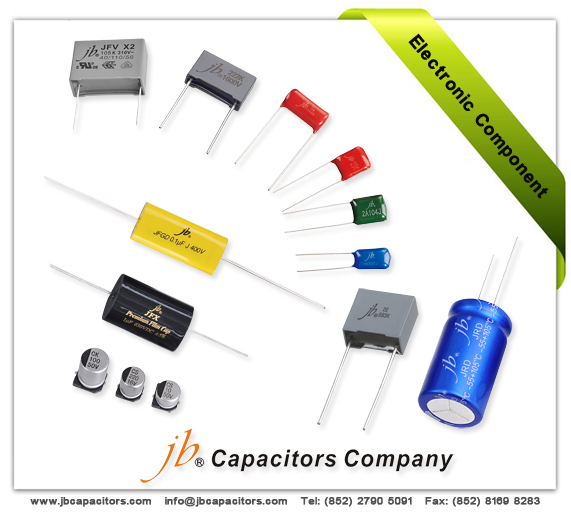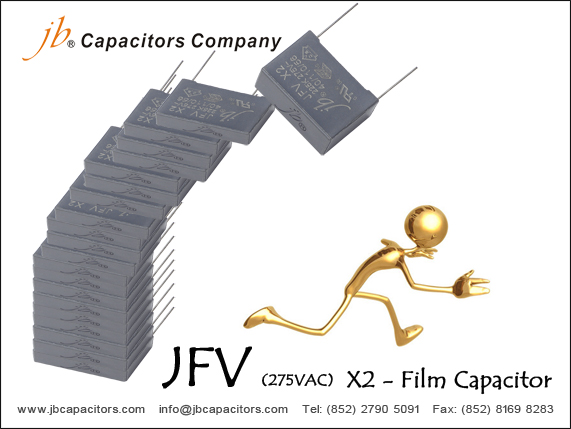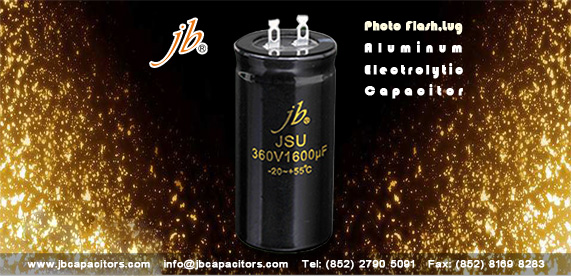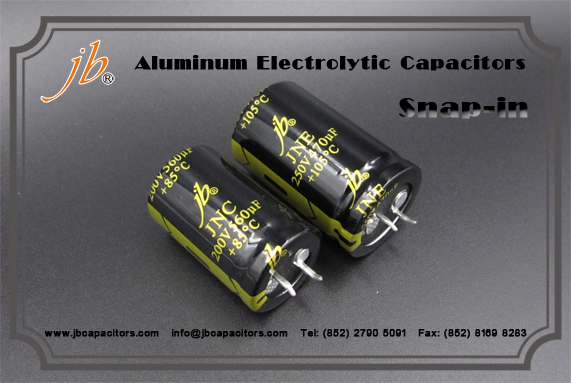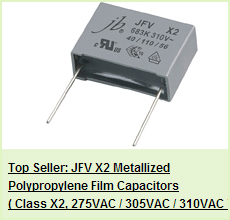jb Film Capacitors Applications
JFA--Polyester Film Capacitors CL11
Applications: DC and pulse circuits of broadcasting and TV sets, all kinds of instruments and communication equipment.
Energy Saving Lamps.
JFB--Metallized Polyester Film Capacitors CL21 and CL21X
Applications: DC and pulse circuits of electronic equipment, TV Sets, communication equipment and energy saving light sources.
Available for automatic insertion.
JFC--Metallized Polyester Film AC Capacitors CL23B
Applications: Low frequency AC circuits, DC and pulse circuits.
JFP--Metallized Foil High Voltage Polypropylene Film Capacitors CBB81
Applications: Suitable for high pulse and large current loading circuits.
JFV--Class X2. Metallized Foil Polypropylene Film Capacitors for Electric-Light Sources CBB18
Applications: Energy Saving Lamps and Electronic Ballasts, High Pulse and Large Current Loading Circuit.
JFL--Metallized Polypropylene Film Capacitors CBB21
Applications: DC and Pulse Circuits.
JFY--Metallized Polypropylene Film AC Capacitors With Plastic Case Sealed CBB62-B
Applications: Appling to request for low dissipation and small internal temperature rise. For example across the line in power supply.
JFM--Metallized Polypropylene Film Capacitors With Plastic Case Sealed CBB21-B
Applications: DC and pulse circuits.
JFQ--Double Sided Box Metallized Polypropylene Film Capacitor of High Voltage Impulse MMKP
Applications: High voltage pulse circuits (for example light sources, laser units).
JFS--Motor Capacitors, CBB60,CBB61,CBB65
Lighting Capacitors for fluorescent lamps, discharge lamps, high-pressure sodium vapour lamps (HS), metal halide lamps (HI), mercury vapour lamps (HM).
